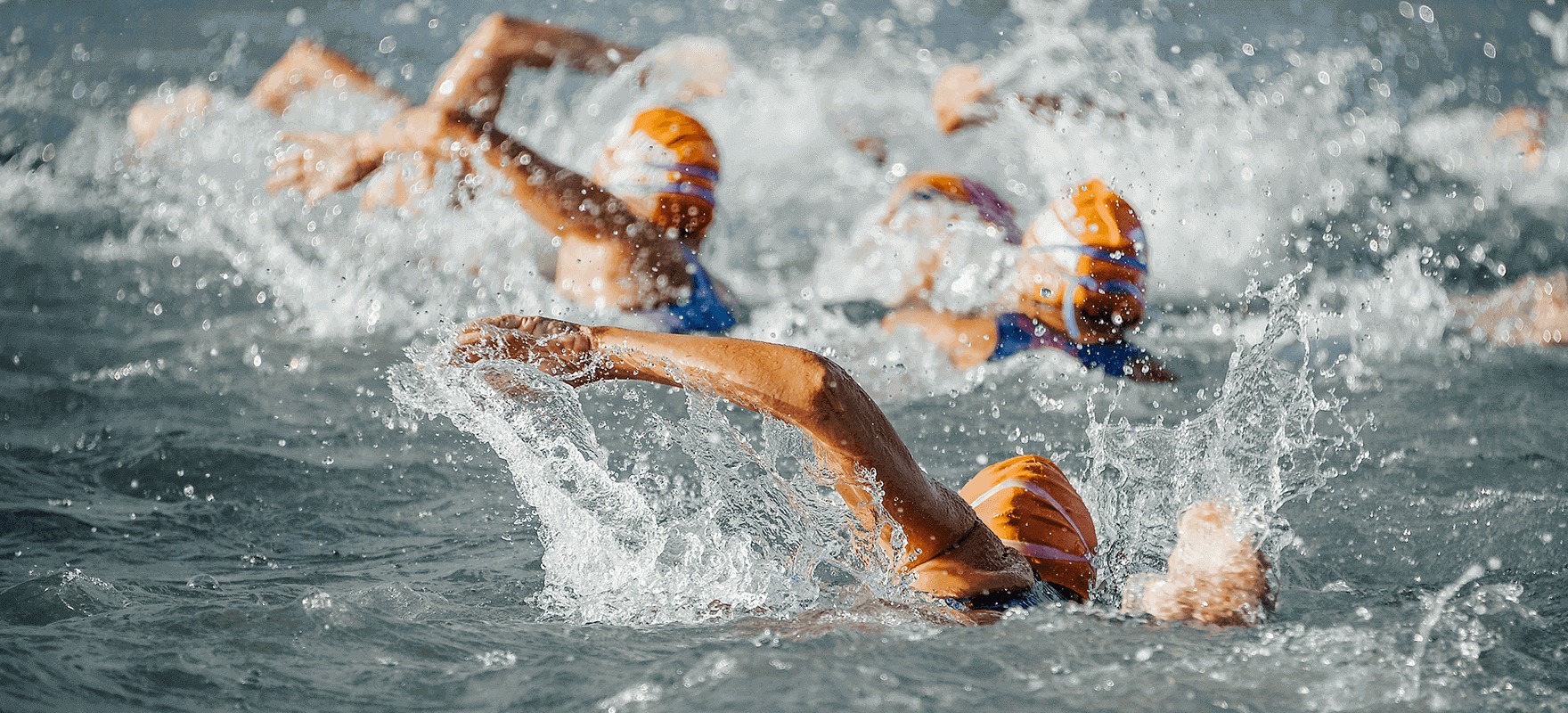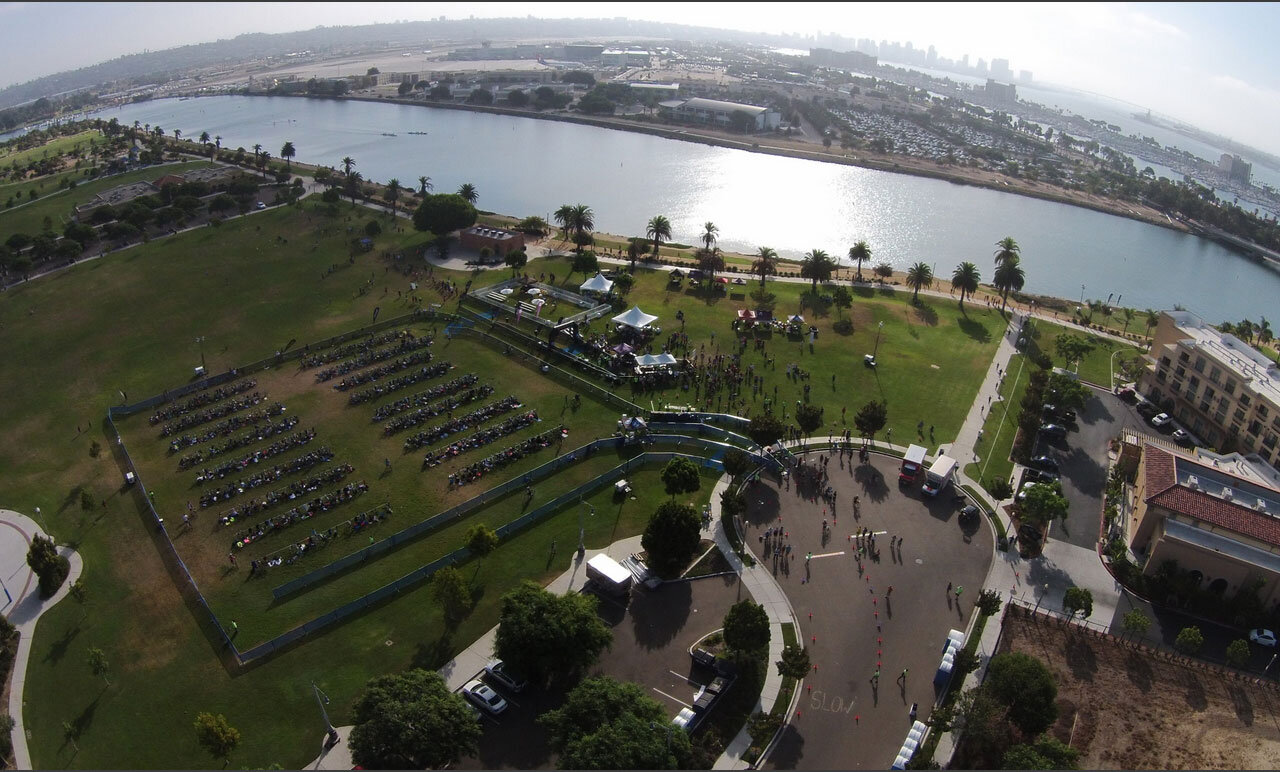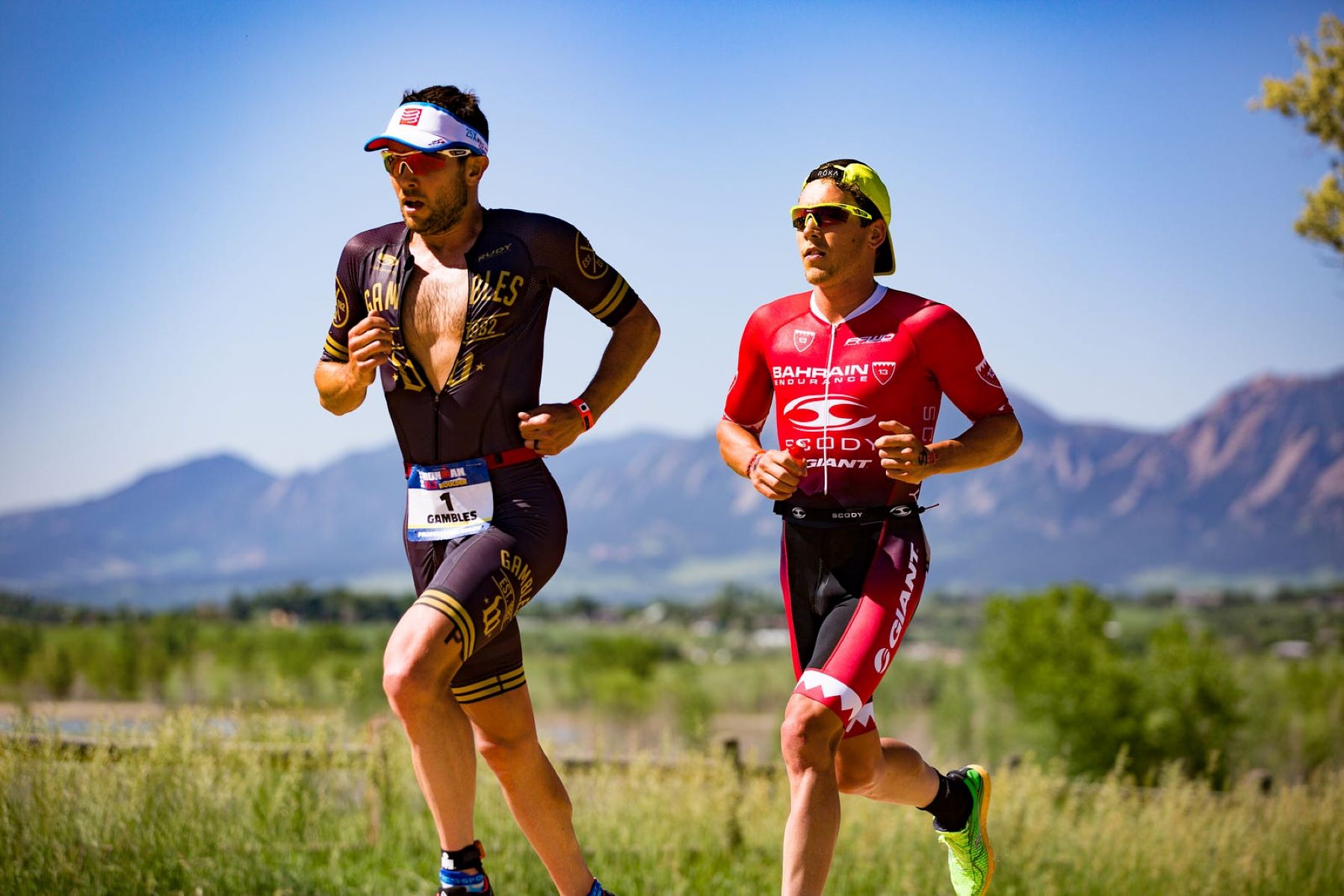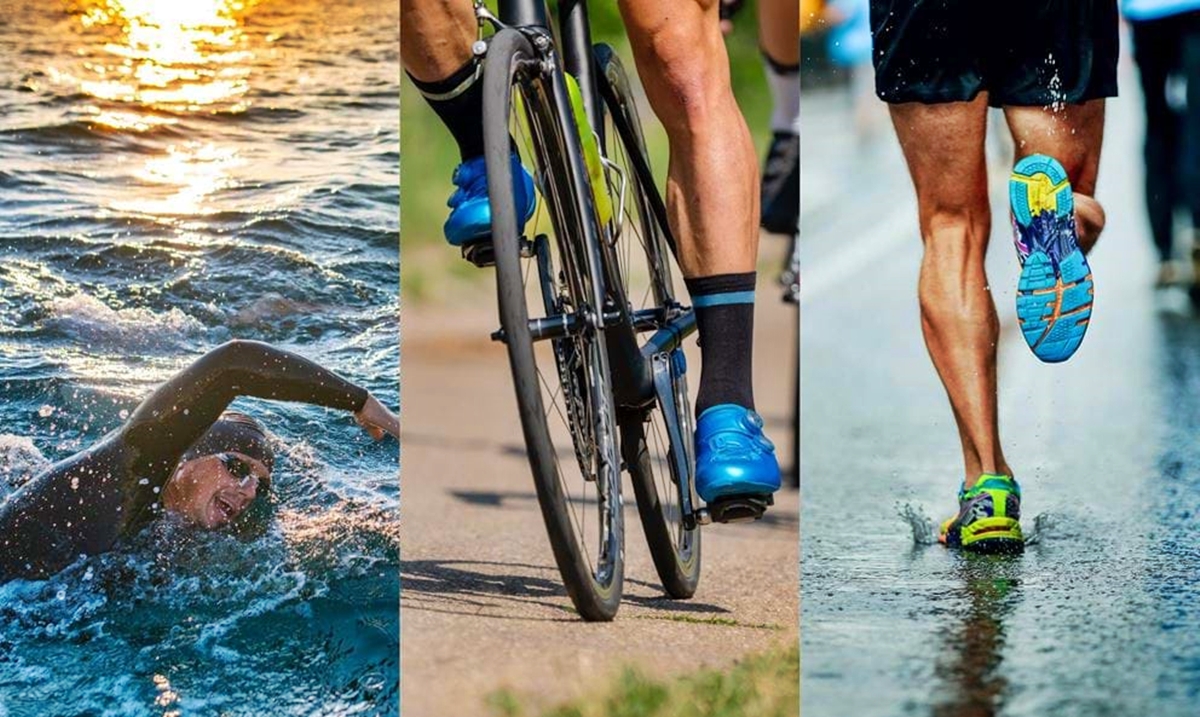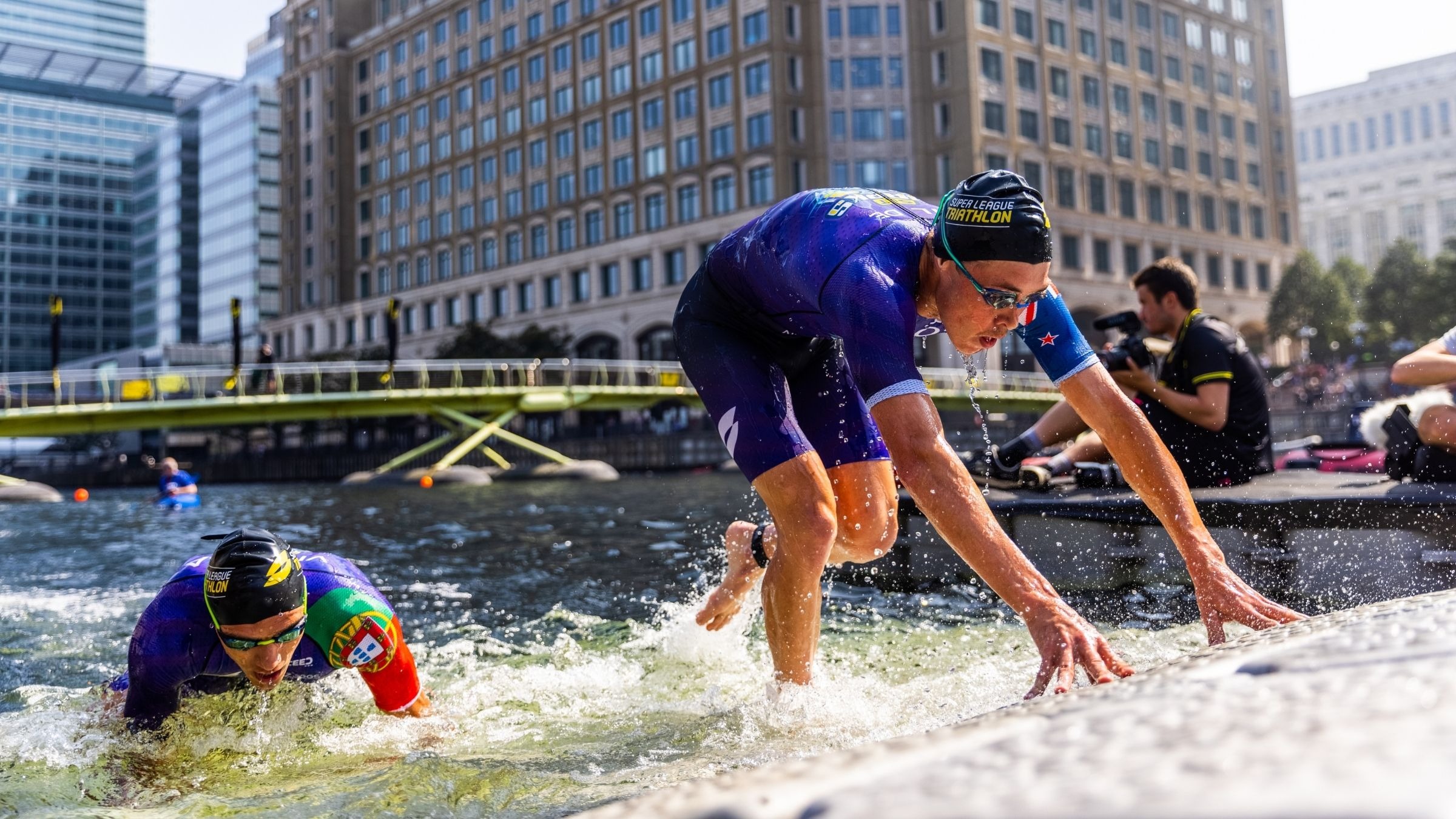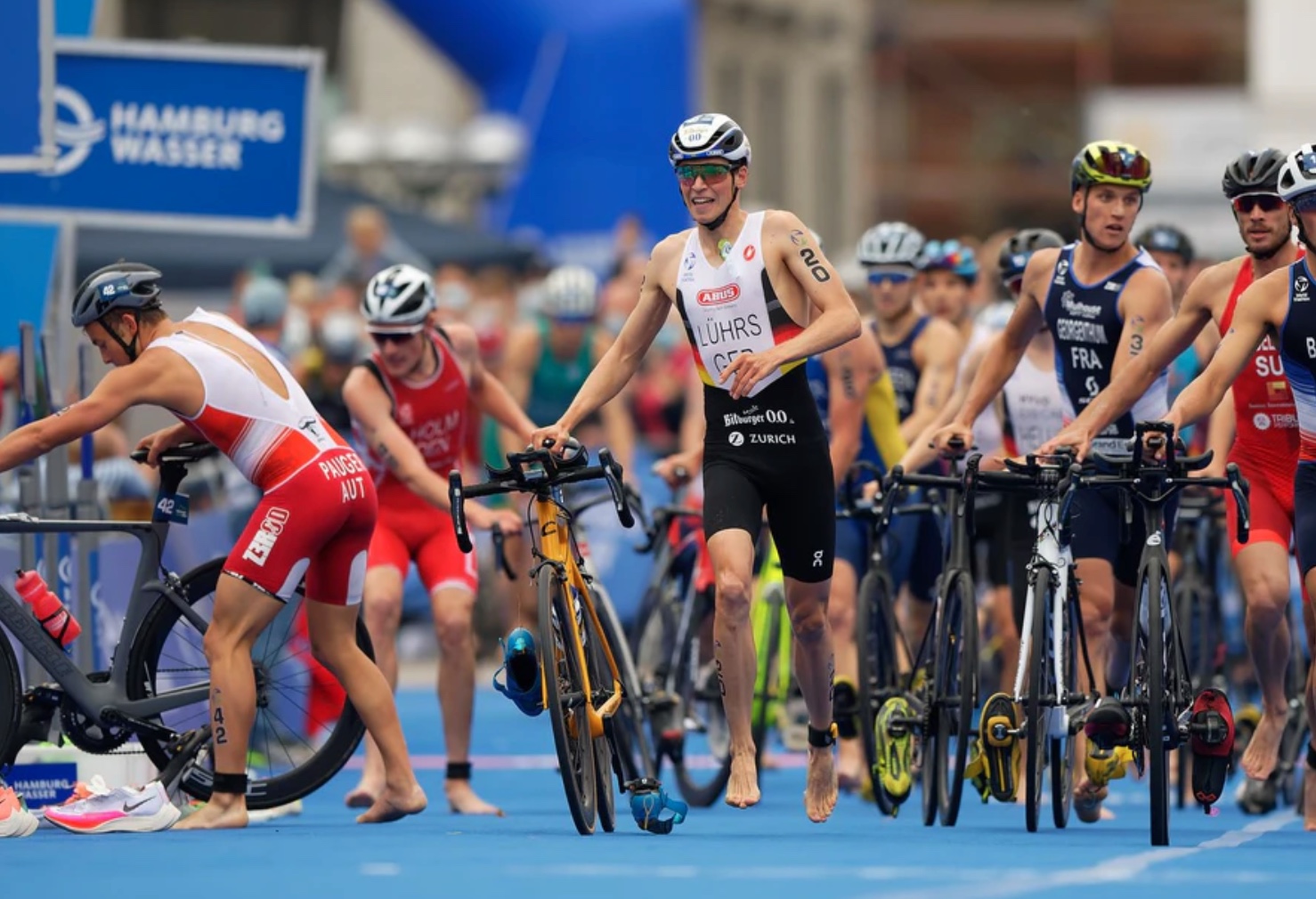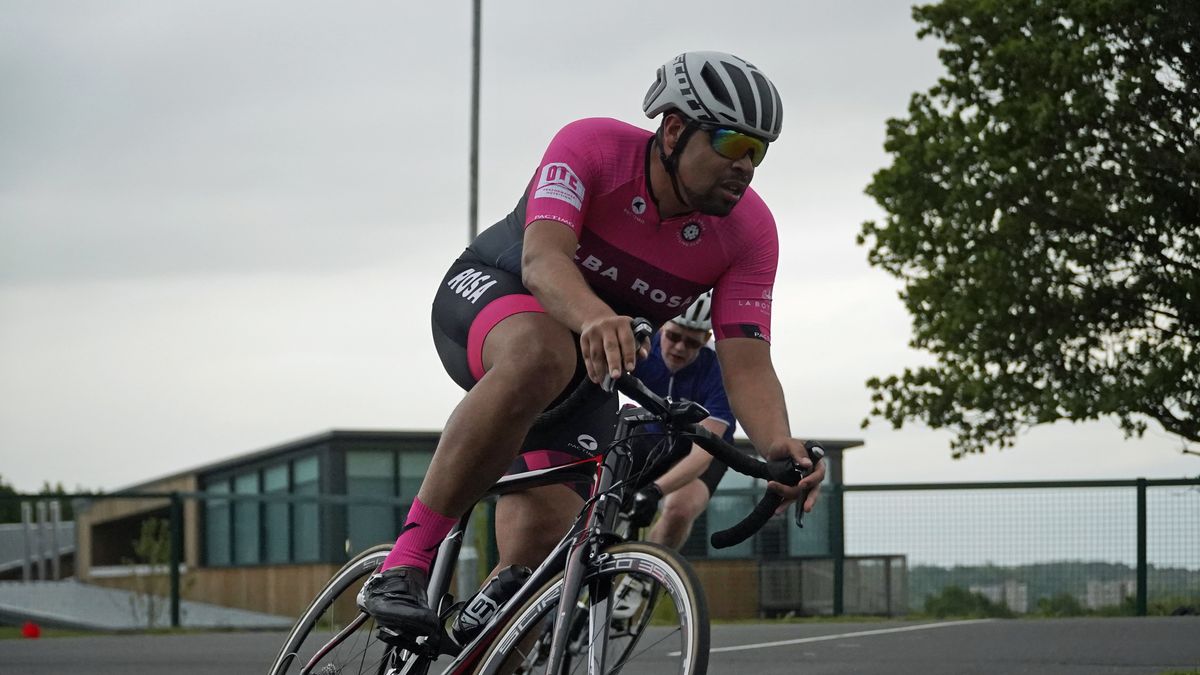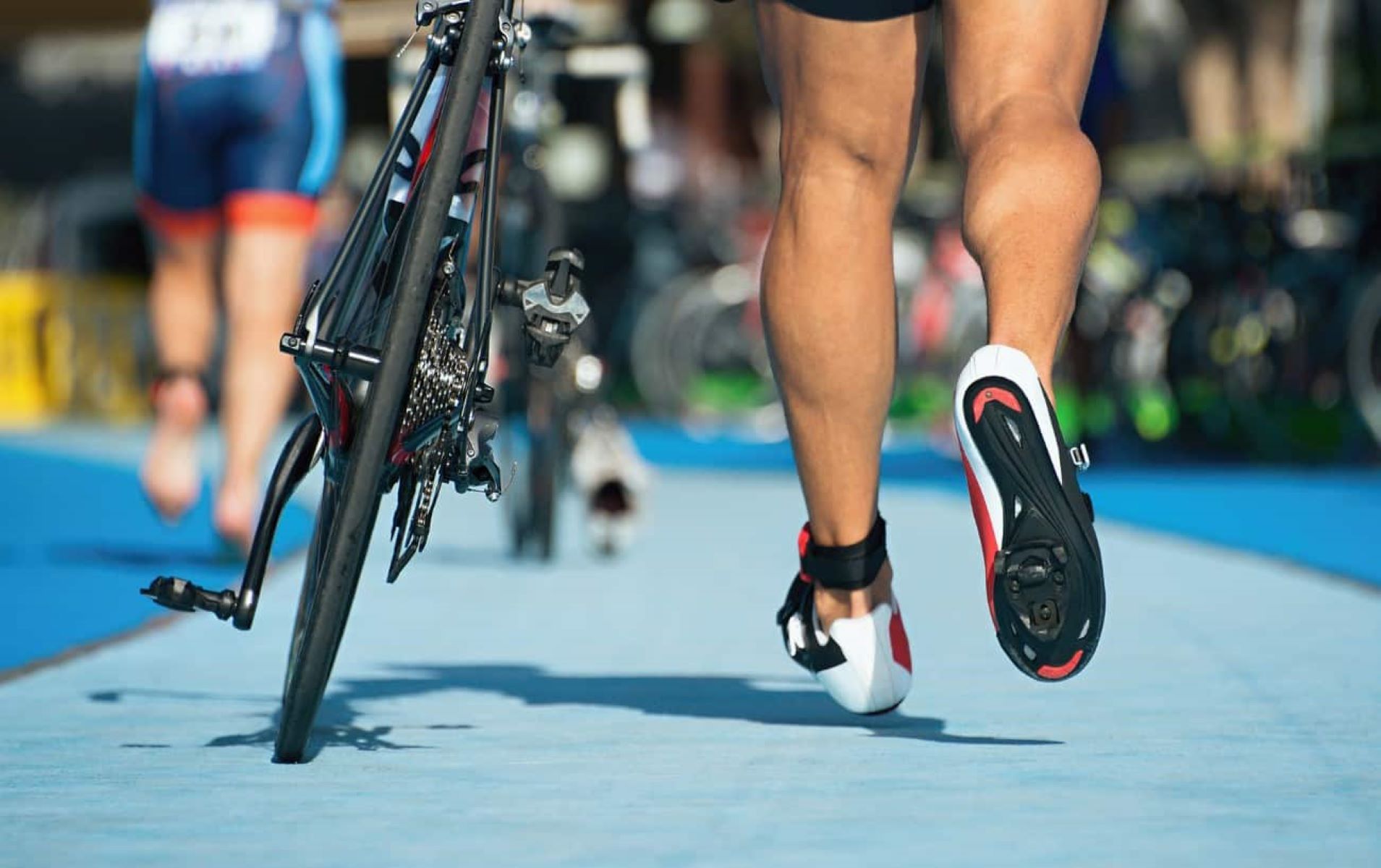

Featured
How Far Is A Sprint Triathlon
Modified: January 2, 2024
Discover how far a sprint triathlon is and get all the featured details you need to conquer this thrilling multisport event.
Introduction
Welcome to the world of triathlons! If you’re someone who enjoys challenging yourself and pushing your limits, then you’ve come to the right place. One of the most popular categories of triathlons is the sprint triathlon. In this article, we’ll explore what exactly a sprint triathlon is, the distances involved, and how you can prepare yourself to participate in this thrilling event.
A sprint triathlon is an exhilarating multi-sport race that combines swimming, cycling, and running into one exciting event. It is the shortest distance triathlon, making it an ideal choice for beginners or those who are new to the world of triathlons. While it may be shorter than other triathlon distances, don’t let that fool you – a sprint triathlon still requires dedication, training, and mental fortitude to complete.
The History of Sprint Triathlons dates back to the 1970s when the sport of triathlon itself was just emerging. The first-ever official triathlon race, known as the Mission Bay Triathlon, took place in San Diego, California in 1974. This race featured a 5.5-mile run, a 3-mile bike ride, and a 600-yard swim. Over the years, the popularity of triathlons grew, and sprint triathlons were introduced as a way to make the sport more accessible to a wider range of individuals.
The distance of a sprint triathlon varies slightly depending on the race organizer and geographical location. However, in general, a sprint triathlon consists of a 750-meter (0.47-mile) swim, a 20-kilometer (12.4-mile) bike ride, and a 5-kilometer (3.1-mile) run. While these distances may seem daunting, with the right training and mindset, anyone can conquer a sprint triathlon.
The swim leg of a sprint triathlon typically takes place in a lake, river, or pool. Swimmers are often grouped together based on their age and gender, starting at different intervals to ensure a smooth and safe race. It’s important to note that swimming in open water can be challenging due to factors such as waves, currents, and limited visibility. Proper swim training and open water practice are essential to prepare for this leg of the race.
Next up is the bike leg, where participants transition from the swim to cycling. A sprint triathlon bike leg typically covers a distance of 20 kilometers (12.4 miles). The terrain may vary from flat roads to hilly terrain, adding an extra challenge to the race. A well-maintained bike, proper biking gear, and training rides on similar terrains are crucial to gain the necessary strength and endurance for this leg.
The final leg of a sprint triathlon is the run. Participants transition from cycling to running and complete a 5-kilometer (3.1-mile) run. This leg requires mental tenacity and endurance, as it comes after the swim and bike portions when the body is fatigued. Training for running, focusing on building endurance and speed, is imperative to successfully complete this last leg.
Completing a sprint triathlon requires dedicated training and preparation. It’s essential to follow a structured training program that includes swimming, cycling, and running workouts. Cross-training, strength training, and mobility exercises can also help improve overall performance. Gradually increasing the training volume and intensity, while allowing for sufficient rest and recovery, will help the body adapt and avoid overtraining injuries.
When participating in a sprint triathlon, it’s important to keep a few key tips in mind. Firstly, ensure that you have all the necessary equipment and gear, including a well-fitting wetsuit, a road-worthy bike, a helmet, and comfortable running shoes. Secondly, practice the transitions between each discipline to minimize time wastage. Finally, make sure to stay properly hydrated and fueled throughout the race to maintain energy levels and optimize performance.
While participating in a sprint triathlon can be an incredible personal achievement, there can be some common challenges along the way. These challenges may include dealing with race day nerves, experiencing fatigue during the transitions, managing open water swim anxiety, and pacing oneself throughout the race. Being aware of these challenges and having strategies in place to overcome them can make a big difference in your overall race experience.
So, if you’re ready to challenge yourself and experience the rush of competing in a multi-sport event, a sprint triathlon might be just what you’re looking for. Start your training, set realistic goals, and enjoy the journey towards accomplishing a remarkable feat. The combination of swimming, cycling, and running in a sprint triathlon will not only test your physical abilities but also strengthen your mental resilience. Happy training and best of luck on your sprint triathlon journey!
What is a Sprint Triathlon?
A sprint triathlon is a multi-sport race that includes swimming, cycling, and running. It is known as the shortest distance triathlon, making it a popular choice for beginners or individuals looking to challenge themselves in the world of triathlons. While it may be shorter than other triathlon distances, a sprint triathlon still requires dedication, training, and mental fortitude to complete.
In a sprint triathlon, participants start with a swim leg, transition to the bike leg, and finish with a run. Each leg presents its own unique challenges, making the race a perfect combination of endurance, strength, and speed.
Typically, the swim leg of a sprint triathlon covers a distance of 750 meters (0.47 miles). This portion typically takes place in a lake, river, or pool. Swimmers may be grouped together based on age and gender, starting at different intervals to ensure a smooth and safe race. Open water swimming can provide additional challenges such as waves, currents, and limited visibility, making proper training and practice essential.
The bike leg of a sprint triathlon usually spans 20 kilometers (12.4 miles). Participants transition from the swim to cycling, taking on varied terrains that range from flat roads to hilly landscapes. Having a well-maintained bike, suitable biking gear, and training rides on similar terrains are crucial for building the necessary strength and endurance for this leg of the race.
Once the bike leg is complete, participants transition to the final leg of the sprint triathlon – the run. This leg consists of a 5-kilometer (3.1-mile) run. Running after swimming and cycling requires mental toughness and physical stamina. Training for running, focusing on endurance and speed, is key to successfully completing this last leg of the race.
To successfully complete a sprint triathlon, it is essential to follow a structured training program that includes swimming, cycling, and running workouts. Cross-training, strength training, and mobility exercises can also help improve overall performance and prevent injuries. Gradually increasing the training volume and intensity while allowing for rest and recovery is crucial for adaptation and improvement.
Participating in a sprint triathlon requires proper equipment and gear, such as a well-fitting wetsuit, a road-worthy bike, a helmet, and comfortable running shoes. Practice and efficiency in transitioning between each discipline can help minimize time wastage during the race.
Overall, a sprint triathlon offers an incredible personal challenge and an opportunity to push your limits. It combines three different disciplines, testing both physical abilities and mental resilience. Whether you are a seasoned athlete or a beginner looking to try something new, participating in a sprint triathlon can be an exhilarating experience that will leave you with a sense of accomplishment and pride in your achievement.
The History of Sprint Triathlons
The sport of triathlon has a fascinating history that dates back to the 1970s. It was during this time that the concept of combining swimming, cycling, and running into a single event began to take shape. The first official triathlon race, known as the Mission Bay Triathlon, took place in San Diego, California in 1974 and marked the birth of this exhilarating sport.
As triathlons gained popularity, organizers realized the need to introduce shorter distance races to attract beginners and individuals who were new to the sport. Thus, the concept of the sprint triathlon was born. Sprint triathlons were designed to be more accessible and less intimidating compared to longer distance races like the Olympic or Ironman distances.
The growth of sprint triathlons gained steady momentum throughout the years. From local grassroots races to international competitions, the sprint distance became a gateway for athletes to experience the unique challenge and thrill of triathlon without the daunting mileage of longer races.
In the early stages of sprint triathlon development, there was no standard distance for the race. Different race organizers would create their own variations, but they typically featured shorter distances in comparison to longer triathlon events. Over time, an unofficial consensus formed around the idea that a sprint triathlon should consist of a 750-meter (0.47-mile) swim, a 20-kilometer (12.4-mile) bike ride, and a 5-kilometer (3.1-mile) run.
Modern technology and advancements in sports science have contributed to the popularity and accessibility of sprint triathlons. Today, there are numerous sprint triathlon events held worldwide, ranging from local community races to international championships. These races attract a wide range of participants, including beginners, age-group athletes, and even elite competitors.
The sprint distance has also become a popular choice for athletes who want to participate in multiple triathlons throughout the season. With shorter recovery times and less demanding training schedules compared to longer distances, sprint triathlons allow athletes to compete more frequently and experience the excitement of triathlon on a regular basis.
The evolution of sprint triathlons has not only made the sport more inclusive but has also created a stepping stone for athletes to progress to longer distances if they choose to do so. Many athletes who start with sprint triathlons find themselves hooked and motivated to take on new challenges, such as Olympic distance triathlons, half Ironman races, or even the iconic Ironman distance.
Overall, the history of sprint triathlons is a testament to the growth and evolution of the sport. From its humble beginnings in the 1970s to the global phenomenon it is today, sprint triathlons continue to captivate individuals who seek adventure, personal growth, and the satisfaction of pushing their physical and mental limits.
Distance of a Sprint Triathlon
A sprint triathlon is known for its relatively shorter distances compared to other triathlon categories. While the exact distances may vary slightly from race to race, there is a general consensus on what constitutes a sprint triathlon.
In a sprint triathlon, participants typically swim a distance of 750 meters (0.47 miles). The swim leg usually takes place in a lake, river, or pool, where participants navigate through the water using various strokes. Open water swimming can pose its own challenges, such as waves, currents, and limited visibility, and requires specific training to ensure safety and efficiency.
Once they complete the swim, participants transition to the bike leg, which typically covers a distance of 20 kilometers (12.4 miles). In this leg, participants ride their bikes on a designated course, which may include various terrains such as flat roads, rolling hills, or even challenging uphill sections. Proper bike handling skills, endurance, and the right equipment are essential for successfully completing this portion of the race.
After completing the bike leg, participants transition to the final leg of the sprint triathlon – the run. The run leg typically consists of a 5-kilometer (3.1-mile) course. It may take place on roads, trails, or a combination of both, depending on the race course. Endurance, pacing, and mental toughness are crucial for finishing strong during the run leg and crossing the finish line.
It’s worth noting that while these distances provide a general guideline for a sprint triathlon, there can be slight variations depending on the specific race. Some races may have longer or shorter swim, bike, or run distances, but they should maintain a similar relative difficulty and total distance.
The sprint triathlon distance is often perceived as an achievable goal for beginners or individuals new to triathlon. It offers a challenging yet manageable experience that allows participants to test their physical fitness, mental stamina, and overall endurance in a multi-sport setting.
As athletes progress in their triathlon journey, they often look to progress to longer distances, such as Olympic distance, half Ironman, or Ironman events. However, the sprint triathlon distance remains a popular choice for seasoned triathletes as well. It allows them to work on speed, transition efficiency, and racing tactics without the same time commitment and physical demands as longer races.
Regardless of whether you’re a beginner or an experienced athlete, the sprint triathlon distance offers an exciting and challenging race experience that can be tailored to individual fitness levels and goals. It’s a fantastic opportunity to push your limits, achieve personal milestones, and become a part of the vibrant and passionate triathlon community.
Swim Leg of a Sprint Triathlon
The swim leg is the first discipline in a sprint triathlon and sets the tone for the entire race. It is an exhilarating yet challenging part of the event that requires specific skills and preparation. The swim leg typically covers a distance of 750 meters (0.47 miles) and takes place in a lake, river, or pool.
Open water swimming can be quite different from swimming in a pool due to factors such as waves, currents, and limited visibility. These factors add an extra level of complexity and require athletes to develop specific techniques and strategies to navigate through the water.
Before the race, participants will usually be grouped together based on their age and gender. This allows for a fair and organized start to avoid overcrowding in the water. The swim usually begins as a mass start, with athletes entering the water together and racing towards the first buoy.
During the swim leg, athletes have the option to use different swim strokes, such as freestyle, breaststroke, or a combination, depending on their comfort and efficiency. Freestyle is the most common stroke used in triathlons, as it is faster and more efficient for covering longer distances. However, athletes can choose the stroke that suits them best and allows them to maintain a steady pace throughout the swim.
One of the key challenges in the swim leg is dealing with the open water environment. Conditions can vary significantly from a calm lake to choppy waves in an ocean. It’s crucial to practice in open water before the race to gain confidence, adapt to the conditions, and work on sighting – the technique of lifting the head to navigate and stay on course.
Proper swim training is essential for a successful swim leg in a sprint triathlon. Athletes should focus on building endurance, strength, and technique. This includes regular pool sessions to work on stroke efficiency, speed intervals for developing race pace, and open water practice to acclimatize to the outdoor environment and navigate effectively.
Wearing a wetsuit is often allowed and encouraged in sprint triathlons, particularly in colder water temperatures. A wetsuit provides buoyancy and insulation, making swimming more efficient and comfortable. It’s important to choose a wetsuit that fits well and allows a full range of motion.
Transitioning from the swim to the next discipline, the bike leg, is an important aspect of a sprint triathlon. Athletes should practice efficient transition techniques to minimize time wastage. This involves quickly removing the wetsuit, putting on cycling gear, and getting ready for the next challenge.
The swim leg of a sprint triathlon offers a unique and exciting start to the race. It requires athletes to be skilled in the water, adapt to open water conditions, and efficiently transition to the next leg. With regular training and practice, participants can develop the necessary swim skills and confidence to conquer this exhilarating portion of the sprint triathlon.
Bike Leg of a Sprint Triathlon
The bike leg is the second discipline in a sprint triathlon and provides an opportunity for participants to showcase their cycling skills and endurance. This leg typically covers a distance of 20 kilometers (12.4 miles) and is an integral part of the overall race.
As participants transition from the swim to the bike leg, they must quickly change into their cycling gear, including a helmet, cycling shoes, and appropriate attire. Efficient transitions are crucial to minimize time wastage and maximize performance during the race.
The bike leg takes place on a designated course, which can vary in terrain and difficulty depending on the race. It may involve flat roads, rolling hills, or even challenging uphill sections. Understanding the course and preparing accordingly can significantly impact performance during the race.
One of the key factors in the bike leg is pacing. Participants must find a sustainable rhythm that allows them to maintain a consistent speed without exhausting themselves too early in the race. Monitoring effort levels, maintaining a comfortable cadence, and paying attention to proper nutrition and hydration are essential to optimize performance during this leg.
Proper bike handling and technique are also critical in a sprint triathlon. This includes maintaining good posture, using gears effectively, and navigating turns and corners safely. It’s important to practice these skills during training to build confidence and improve overall performance on race day.
A well-maintained bike is essential for a successful bike leg. Regular bike maintenance, including checking tire pressure, brakes, and gears, can prevent mechanical issues and ensure a smooth ride. It’s also crucial to have a bike that is suitable for the specific terrain of the race and provides a comfortable riding position.
Aerodynamics can play a role in optimizing performance during the bike leg. Participants can utilize techniques such as drafting – riding closely behind another cyclist to reduce wind resistance – to conserve energy and gain speed. However, it’s important to follow race rules and maintain a safe distance from other participants during the race.
Training for the bike leg of a sprint triathlon involves regular cycling sessions that include a mix of endurance rides, interval training, and hill repeats. Gradually increasing training volume and intensity while allowing for adequate rest and recovery will help develop the necessary strength and stamina for the race.
Transitioning from the bike to the final leg, the run, is another critical aspect of a sprint triathlon. Participants should practice efficient transition techniques to minimize time wastage and ensure a smooth shift from cycling to running. This includes quickly dismounting the bike, changing into running shoes, and mentally preparing for the challenge ahead.
The bike leg of a sprint triathlon offers participants the opportunity to showcase their cycling abilities and endurance. By focusing on pacing, efficient bike handling, and proper training, athletes can excel in this leg of the race and set themselves up for a strong finish.
Run Leg of a Sprint Triathlon
The run leg is the final discipline in a sprint triathlon and often proves to be the most mentally and physically demanding. Participants transition from the bike to the run and cover a distance of 5 kilometers (3.1 miles) to reach the finish line.
The run leg requires mental tenacity and endurance, as it comes after the swim and bike portions when the body is already fatigued. It tests the athlete’s ability to maintain a steady pace and push through any discomfort or fatigue that may arise.
Proper training for the run leg is crucial to ensure a strong finish. This includes dedicated running workouts focused on building endurance and speed. Interval training, tempo runs, and long runs should be incorporated into the training program to improve cardiovascular fitness and muscular endurance.
The terrain during the run leg can vary depending on the race course. It may involve running on roads, trails, or a combination of both. Understanding the course beforehand allows participants to mentally prepare and strategize their approach for the best performance.
One of the key factors in the run leg is pacing. Participants should aim to start the run conservatively and gradually increase their effort as the race progresses. Maintaining a consistent pace and avoiding starting too fast can help prevent early fatigue and ensure a strong finish.
Mental resilience plays a significant role during the run leg. It’s common to experience moments of doubt or fatigue, particularly towards the latter part of the race. Developing mental strategies, such as positive self-talk, setting small goals along the way, and focusing on form and breathing, can help athletes overcome these challenges and push through to the finish line.
Proper nutrition and hydration during the run leg are essential to maintain energy levels and optimize performance. Adequate fueling and hydration strategies should be developed during training to ensure that athletes have the necessary nutrients and fluids to sustain their effort throughout the run.
Transitioning from the run leg to the finish line requires mental determination and focus. Participants should practice efficient transition techniques to minimize time wastage and ensure a smooth shift from running to celebrating their accomplishment.
Completing the run leg of a sprint triathlon is an incredible achievement. It represents the culmination of the three disciplines – swimming, cycling, and running – and showcases an athlete’s overall fitness and determination.
With proper training, pacing, mental resilience, and nutrition, participants can tackle the run leg with confidence and finish the sprint triathlon strong. Remember to enjoy the moment, embrace the support of fellow racers and spectators, and savor the feeling of crossing the finish line!
Training for a Sprint Triathlon
Training for a sprint triathlon requires a well-structured plan that encompasses swimming, cycling, and running workouts. Whether you’re a beginner or an experienced athlete, here are some key considerations to keep in mind when preparing for a sprint triathlon.
1. Develop a Training Schedule: Create a training schedule that gradually increases in intensity and volume over the weeks leading up to the race. Incorporate a mix of swimming, cycling, and running sessions, along with rest days for recovery.
2. Swim Training: Focus on building endurance and technique in the water. Include pool sessions where you practice different swim strokes, drills, and intervals. Also, allocate time for open water practice to acclimatize to the conditions you may encounter during the race.
3. Cycling Training: Incorporate both indoor and outdoor rides to build cycling fitness. Include long rides to build endurance, interval training for speed and power, and hill workouts to improve climbing ability. Familiarize yourself with different terrains that you may encounter during the race.
4. Running Training: Develop a running program that focuses on building endurance, speed, and mental resilience. Include long runs to build endurance, interval training to improve speed, and tempo runs to enhance race pace. Gradually increase mileage while allowing for proper rest and recovery.
5. Brick Workouts: Brick workouts involve combining two disciplines in one session, typically a bike ride immediately followed by a run. This helps the body adapt to the transition between cycling and running, which can feel challenging during the race. These sessions also simulate race conditions and allow you to practice pacing.
6. Cross-Training: Incorporate cross-training activities such as strength training, yoga, or swimming drills to build overall fitness, prevent injury, and maintain balance in your training program. These activities can improve muscular strength, flexibility, and mobility, which are beneficial for all three disciplines.
7. Rest and Recovery: Allow for sufficient rest and recovery days in your training schedule. Proper recovery is essential for the body to adapt and make progress. Listen to your body, prioritize sleep, and pay attention to any signs of overtraining or injury.
8. Nutrition and Hydration: Fuel your body with proper nutrition before, during, and after training sessions. Hydration is also crucial, especially during longer workouts. Experiment with different nutrition and hydration strategies during training to find what works best for you on race day.
9. Mental Preparation: Triathlons require mental resilience. Practice mental techniques such as visualization, positive self-talk, and setting realistic goals to help you stay focused and motivated during training and on race day.
10. Race Simulations: As race day approaches, plan a few race simulation sessions where you practice swimming, cycling, and running consecutively. This will help you familiarize yourself with the demands of the race and fine-tune your pacing and transitions.
Remember, consistency and gradual progression are key in triathlon training. Be patient, embrace the process, and enjoy the journey towards accomplishing your sprint triathlon goals. With dedication, proper training, and a positive mindset, you’ll be well-prepared to tackle the challenges of the race and cross the finish line with pride.
Tips for Completing a Sprint Triathlon
Completing a sprint triathlon requires physical preparedness, mental strength, and efficient race execution. Whether you’re a beginner or a seasoned triathlete, here are some tips to help you successfully complete a sprint triathlon:
1. Start with a Plan: Create a race-day plan that includes details such as race logistics, equipment preparation, nutrition strategy, and pacing goals. Having a plan in place will help you stay focused and organized throughout the race.
2. Practice Transitions: Transitioning smoothly between disciplines can save valuable time. Practice transitioning from swim to bike and bike to run during your training sessions. Lay out your gear in a logical order and rehearse the movements to minimize time wastage on race day.
3. Train for Open Water Swimming: If possible, practice swimming in open water to acclimate yourself to unfamiliar conditions such as waves, currents, and limited visibility. Confidence in open water can greatly enhance your swim leg performance.
4. Familiarize Yourself with the Course: Study the course map and elevation profiles beforehand. Familiarizing yourself with the course will allow you to make informed decisions about pacing, gear selection, and race strategy.
5. Pace Yourself: Avoid going out too hard at the start of the race. Pace yourself conservatively to ensure you have enough energy to finish strong. Maintain a steady effort throughout the event, adjusting according to the distance and terrain.
6. Stay Hydrated and Fueled: Hydration and nutrition are crucial during a triathlon. Practice your nutrition and hydration strategy during training to determine what works best for you. On race day, be sure to stay properly hydrated and fueled to maintain energy levels.
7. Focus on Form and Breathing: Pay attention to your running and cycling form. Maintain good posture, relax your shoulders, and breathe deeply to oxygenate your muscles. This will help prevent fatigue and improve efficiency.
8. Listen to Your Body: Tune in to your body’s cues during the race. Push yourself to your limits, but also be mindful of any signs of overexertion or injury. Adjust your effort accordingly to maintain a sustainable pace and ensure a safe and enjoyable race.
9. Enjoy the Experience: Remember to enjoy the journey and have fun throughout the race. Take in the surroundings, embrace the support from fellow athletes and spectators, and celebrate your achievements as you cross the finish line!
10. Reflect and Learn: After the race, take the time to reflect on your performance. Identify what went well and what areas you can improve on for future races. Learning from each race experience will help you grow as a triathlete.
Remember, completing a sprint triathlon is a significant accomplishment. Embrace the challenges, stay positive, and celebrate your progress and achievements throughout the journey. With preparation, perseverance, and a determined mindset, you’ll be poised for success in your sprint triathlon.
Common Challenges in Sprint Triathlons
Sprint triathlons offer a unique and rewarding experience, but they also come with their fair share of challenges. Understanding and preparing for these challenges can help you navigate through the race more effectively. Here are some common challenges that participants may encounter during a sprint triathlon:
1. Swim Anxiety: Many athletes experience anxiety or nervousness before and during the swim leg, especially in open water. Lack of visibility, waves, or crowded swimming conditions can contribute to this anxiety. Overcoming swim anxiety requires practice, exposure to open water, and learning relaxation techniques to calm the mind.
2. Transition Efficiency: Transitioning smoothly between disciplines is crucial for saving time and maintaining momentum. Many participants struggle with transitioning quickly from the swim to the bike and from the bike to the run. Practicing transitions during training sessions and minimizing unnecessary movements can help improve efficiency.
3. Pacing: Maintaining an appropriate pace throughout the race can be challenging, especially for beginners. Starting too fast can lead to early fatigue, while starting too slow may result in missed performance potential. It’s essential to find a sustainable race pace from the start and make adjustments as needed.
4. Nutrition and Hydration: Proper fueling and hydration are critical for endurance events like a triathlon. Some athletes may struggle with effective nutrition and hydration strategies during the race. It’s important to practice and refine your nutrition and hydration plan during training to avoid issues such as stomach discomfort or energy depletion on race day.
5. Mental Resilience: Triathlons test mental strength and resilience, as the race involves pushing through physical discomfort and mental fatigue. Participants may encounter moments of self-doubt or mental fatigue during the race. Developing mental resilience through visualization, positive self-talk, and setting small goals can help overcome these challenges.
6. Weather Conditions: Sprint triathlons are often held outdoors and are subject to varying weather conditions. Heat, wind, rain, or cold temperatures can impact race performance and overall comfort. Preparing for different weather scenarios and adapting race strategies accordingly is essential.
7. Injury Prevention: Training for a sprint triathlon places demands on the body, increasing the risk of overuse or impact-related injuries. Common injuries include sprains, strains, and tendonitis. Incorporating strength training, cross-training, and proper rest and recovery into your training plan can help prevent injuries.
8. Time Management: Balancing the demands of training, work, family, and other commitments can be challenging. Finding the time to fit in regular workouts and recover adequately can be a juggling act. Effective time management, scheduling workouts in advance, and involving loved ones in supporting your goals can help overcome this challenge.
9. Race Day Nerves: Nervousness and pre-race jitters are common among participants, especially before their first sprint triathlon. Managing race day nerves involves developing pre-race routines, arriving early to become familiar with the race environment, and focusing on your own performance rather than comparing yourself to others.
10. Equipment and Gear: Selecting and using appropriate equipment and gear is crucial for a successful race. Ill-fitting gear such as wetsuits, helmets, or shoes can cause discomfort or hinder performance. It’s important to invest in proper gear, ensure it is well-maintained, and practice using it during training sessions.
Despite these challenges, participation in a sprint triathlon is a rewarding experience that offers personal growth and a sense of accomplishment. By being aware of these common challenges and taking proactive measures to prepare and overcome them, you can navigate your sprint triathlon journey with confidence and enjoy the exhilarating race experience.
Conclusion
Participating in a sprint triathlon is a thrilling and rewarding experience that combines swimming, cycling, and running into one challenging event. The history of sprint triathlons dates back to the emergence of the sport in the 1970s, with a vision to make triathlon more accessible to athletes of all levels.
A sprint triathlon typically consists of a 750-meter swim, a 20-kilometer bike ride, and a 5-kilometer run. Although shorter in distance than other triathlon categories, the sprint distance still requires dedication, training, and mental fortitude to complete.
To successfully complete a sprint triathlon, it is important to incorporate structured training that includes swimming, cycling, and running workouts. Cross-training, rest, and recovery are also crucial elements of a well-rounded training plan. Practice efficient transitions, focus on proper pacing, and develop mental resilience to overcome challenges that may arise during the race.
Throughout the race, participants may encounter common challenges such as swim anxiety, transition efficiency, pacing, nutrition and hydration, mental resilience, weather conditions, injury prevention, time management, race day nerves, and equipment selection. Being aware of these challenges and preparing accordingly can help overcome them and enhance the overall race experience.
Completing a sprint triathlon is an incredible achievement, regardless of your experience level. It represents a personal triumph, a test of physical and mental strength, and a journey of self-discovery. The satisfaction and sense of accomplishment that comes with crossing the finish line are unparalleled.
So, whether you’re a novice looking to take on a new challenge or an experienced athlete seeking to improve your performance, don’t hesitate to dive into the world of sprint triathlons. Embrace the training, push your limits, and savor every moment of the race. The combination of swimming, cycling, and running will not only strengthen your physical fitness but also cultivate mental resilience and leave you with memories that last a lifetime.
Remember, every step, pedal, and stroke counts. Train hard, stay focused, and believe in yourself. With determination, preparation, and excitement, you’ll be well on your way to crossing that finish line with a triumphant smile on your face and an exhilarating sense of accomplishment in your heart.
